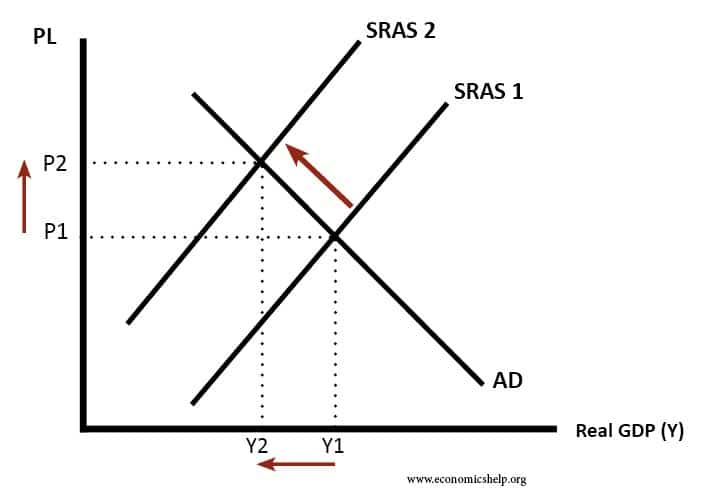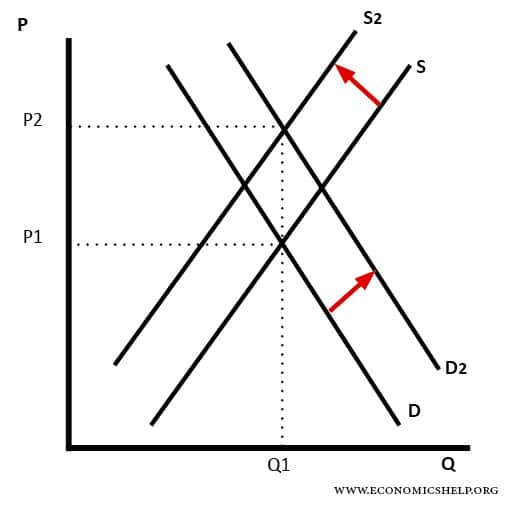When food prices rise in the developed world, it is an inconvenience, something to grumble about. But, when food prices rise in the developing world, it can make a difference between going hungry and getting enough to eat.
Food inflation is volatile. Agricultural prices tend to fluctuate because demand and supply are both inelastic and supply can vary due to the weather. However, despite the usual volatility, food prices seem to be showing a strong upward movement, reaching record highs in recent years.
For example, in India, a booming economy has GDP expanding at 9% a year. Official inflation is around 7%, but, headline food inflation is more than double at 17.8% [1. Indian food inflation at Economist, Jan 6th, 2011]
The Food and Agricultural Organisation said its food price index rose to 214.7 points in Jan 2001, above the peak of 213.5 set in June 2008. [2. UN Body warn of Food Price shock at FT]
What is Causing Food Inflation?
Diagram showing rising food prices:
- There have been short-term supply constraints such as bad weather. However, there is also evidence of increasing long-term supply constraints such as loss of farming land due to global warming.
- Increased use of bio-fuels. Growing crops for energy rather than food production.
- Rising Demand. Rapid economic growth in China and India is increasing demand for more resource intensive foods. As incomes rise, people tend to spend a higher % of While on meat and dairy products. These require more intensive land cultivation. e.g. crops are used to feed cattle. Therefore the supply of crops for food has decreased.
Cost-push inflation

Implications of Food Inflation
It is important to bear in mind food price spikes tend to be temporary and often the result of local bottleneck shortages. While rising food prices tend to make headlines, later falls in prices tend to make less news. However, even temporary periods of rising prices can cause widespread hardship to those on the breadline. Agriculture is a market when relying on free market forces can cause much hardship. Though often difficult to implement, there is a necessity for guaranteeing supply and minimum prices of at least the basic food stuffs such as rice and wheat. (see: Buffer Stocks)
Also, the rise in food prices cannot just be put down to short term factors. A growing population and growing affluence will inevitably place greater demand on agriculture. If environmental pressures continue to grow the pressures on both supply and demand could lead to food prices becoming more common.
It is true that we gloomy Malthusian prophecies have often proved false. But, that doesn’t mean we can always count on increasing food supply to meet demand. There are diminishing returns to green technology, especially when the weather erodes away our fertile land.
Whilst we worry about Space travel, quantitative easing and marvel at the growth of electronic technology, it is rather humbling that the greatest problem of mankind still seems to revolve around food and water.
Related


Demand for food is inelastic, but we have seen recently the food shortages in Venezuela which have caused grave difficulties for citizens. There are reports of citizens that have lost large amounts of weight because inflation has caused their food prices to skyrocket. Meanwhile, large swaths of farmland go unused. As you stated, there is a necessity to guarantee supply, but even their basic food supply is not being met. Rice, beans, eggs and flour are beyond the reach of most citizens of Venezuela. The elasticity is low for food supplies, but as the price of staple items reaches beyond what most can afford, what are their options?